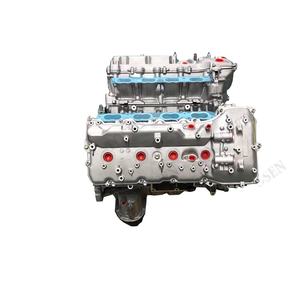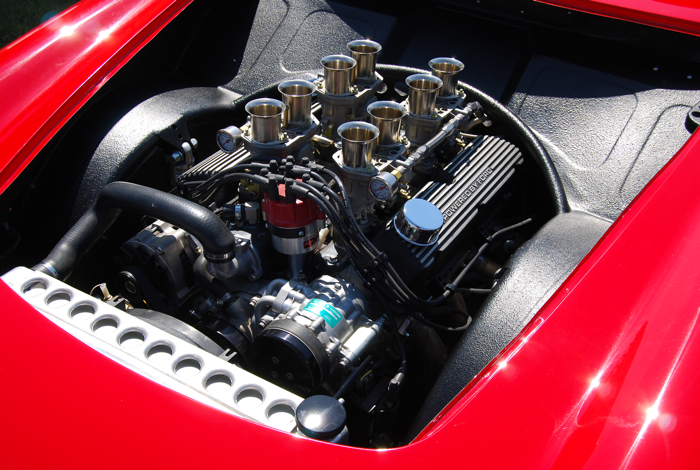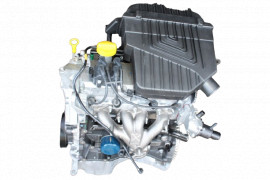Checking Out the Inner Workings of a Compact Car's Engine System
As vehicle drivers, we commonly take for given the intricate procedures that occur within the boundaries of our car's engine system. In this exploration of a portable car's engine system, we will certainly unwind the inner functions of this mechanical symphony, shedding light on the secrets that drive us forward on our day-to-day journeys.
Burning Process Introduction
The combustion procedure in a compact lorry's engine system is an important mechanism that successfully converts gas right into energy to power the vehicle. This process takes place within the combustion chamber of the engine, where fuel and air mix, spark, and generate controlled surges. The burning process is composed of 4 main stages: consumption, power, exhaust, and compression.
During the consumption stage, the piston moves downward, reeling in a mix of air and gas into the burning chamber. The next phase, compression, includes the piston relocating up, compressing the air-fuel blend to enhance its effectiveness. Consequently, in the power phase, the stimulate plug fires up the pressed mix, leading to a fast growth of gases that requires the piston pull back. This downward movement generates the power needed to drive the car. In the exhaust stage, the burnt gases are gotten rid of from the combustion chamber through the exhaust shutoff, preparing the chamber for the following cycle. This cyclic combustion procedure is fundamental to the procedure of a compact lorry's engine system, guaranteeing reliable power conversion for propulsion.
Piston and Cyndrical Tube Interaction

The piston's accurate fit within the cylinder is essential for maintaining optimum compression and stopping energy loss during burning. Limited clearances between the piston and cyndrical tube wall surfaces make sure effective sealing, permitting the piston to move smoothly without allowing gases to leakage past. Proper lubrication is also essential to decrease rubbing and put on between these components, enhancing long life and efficiency.
Moreover, the design and products used in making the piston and cylinder impact engine performance and toughness. Modern engines typically employ light-weight yet resilient materials like light weight aluminum alloys for pistons and cylinder linings to decrease inertia and boost thermal effectiveness. Overall, the unified communication between the piston and cyndrical tube is fundamental to the engine's performance and overall performance.
Gas Injection System Performance
Gas injection systems in small vehicle engines play an essential function in specifically delivering gas to the burning chamber for effective and regulated ignition. The gas shot system functions by infusing gas right into the burning chamber at the optimum minute throughout the engine's procedure (opel corsa engine). This specific timing guarantees that the fuel mixes uniformly with the air for appropriate burning, causing enhanced fuel effectiveness and minimized discharges
There are mostly two types of fuel shot systems utilized in small car engines: port gas shot (PFI) and direct fuel shot (DFI) PFI systems inject fuel right into the consumption port before the intake valve, while DFI systems infuse fuel directly right into the combustion chamber. Both systems have their benefits, use this link with DFI offering better fuel atomization and PFI providing a much more cost-efficient service.
Recognizing Engine Air Conditioning Devices
Efficient procedure of a small lorry's engine relies heavily on the performance of its cooling systems. Engine air conditioning is important to prevent overheating, which can result in major damage and lowered performance. The air conditioning system in a compact automobile usually includes several elements functioning with each other to regulate the engine temperature. One critical part is the radiator, which utilizes coolant to absorb warm from the engine. As the warm coolant moves via the radiator, it releases look at this web-site heat into the air, cooling down before returning to the engine. The water pump distributes the coolant with the engine and radiator, making certain a consistent flow to regulate temperature level. Furthermore, the thermostat aids regulate the coolant circulation to preserve ideal engine temperature. Some cars also have cooling followers that turn on when additional cooling is needed, such as throughout hefty web traffic or heat. Understanding these engine air conditioning devices is crucial for maintaining the efficiency and durability of a small vehicle's engine system.

Exhaust System Parts Explained
The optimal functioning of a compact automobile's engine air conditioning systems depends on a corresponding system recognized as the exhaust system, which consists of numerous essential components for guaranteeing effective emissions and engine performance. The exhaust manifold collects exhaust gases from the engine's cylinders and courses them to the catalytic converter.
One critical element of the exhaust system is the oxygen sensor, which monitors the oxygen degrees in the exhaust gases to assist regulate basics gas usage and guarantee optimum engine efficiency. opel corsa engine. Additionally, the resonator might exist in some exhaust systems to reduce sound levels. On the whole, the exhaust system plays a crucial role in keeping engine effectiveness, reducing unsafe discharges, and ensuring a quieter driving experience for small vehicle proprietors

Verdict
To conclude, the portable vehicle's engine system is a complicated mix of elements that interact to help with the burning process, convert gas right into energy, and get rid of waste gases. Recognizing the inner functions of the engine system, consisting of the piston and cylinder interaction, fuel shot system, engine air conditioning mechanisms, and exhaust system elements, is critical for maintaining ideal efficiency and performance of the vehicle.
The combustion process in a portable lorry's engine system is a vital system that successfully transforms gas into energy to power the car.Fuel injection systems in small automobile engines play an essential role in precisely delivering fuel to the combustion chamber for efficient and controlled ignition.There are mainly two types of fuel injection systems used in compact car engines: port fuel injection (PFI) and direct fuel shot (DFI) Comprehending these engine air conditioning mechanisms is crucial for maintaining the performance and longevity of a small car's engine system.
The ideal functioning of a compact automobile's engine cooling systems depends on a corresponding system understood as the exhaust system, which comprises various important components for ensuring reliable exhausts and engine efficiency.